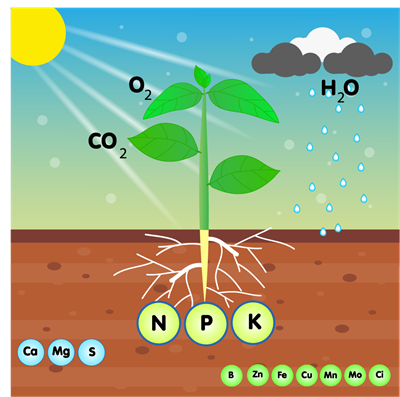PDF chapter test TRY NOW
In India, farming ranges from small to large farms. Different farmers have small or large farms in which they use various farming practices. The farming practice depends on the land, money and access to information and technologies. Mostly the farming practice depends on money or financial conditions.
There is a correlation between higher capital inputs and yields. Thus farmer’s capacity for inputs decides the cropping system and farming practices. The production practices thus are divided into different levels:
- No cost production
- Low-cost production
- High-cost production
Crop production management includes management of nutrients, irrigation and the cropping patterns that are discussed in detail below.
Management of nutrients:
Like animals, plants also require nutrients for growth and development. Nutrients are inorganic elements supplied to plants by air, water and soil.
Airsupplies carbon and oxygen, hydrogen is supplied by the water, and soil supplies the other thirteen nutrients to plants.
Among the thirteen, some nutrients are needed in large quantities called the macro-nutrients. The other nutrients used in small amounts are called micro-nutrients.
Source | Nutrients |
| Air | Carbon, oxygen |
| Water | Hydrogen, oxygen |
| Soil | Macronutrients - nitrogen, phosphorus, potassium, calcium, magnesium, sulphur Micronutrients - iron, manganese, boron, zinc, copper, molybdenum, chlorine |

Various sources of nutrients supplied to plants
Deficiency in any of the nutrients affects the plant process like reproduction, growth and susceptibility to diseases. Nutrients are supplied to soil by manure and fertilisers that increase the crop yield.
